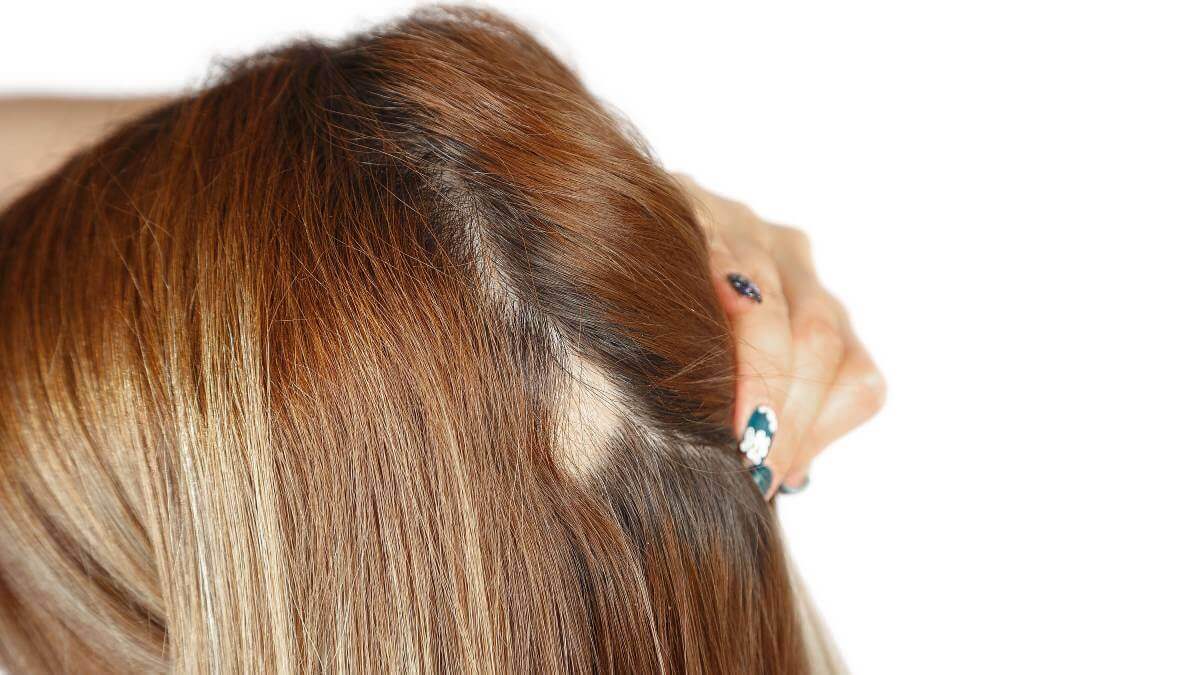We usually hear about men going bald, but hair loss doesn’t only affect men. When it comes to hair loss in women, there is no one-size-fits-all causal factor. Women may lose their hair because of an underlying medical condition, a side-effect from medicine or genetics.
Hair loss can be daunting for women. Here, I explain female hair loss, what happens, when and why.
What causes female hair loss?
Similar to male balding, hair loss and thinning in women is usually inherited from either (or both) parents. Genetic hair loss is also known as female-pattern-balding and starts around menopause.
It’s more common than you may think, as almost 50 per cent of women will experience it to some degree.
If you do notice your hair thinning or falling out earlier, it could be a sign of other conditions that may require medical attention. For example, hair loss is a common symptom of polycystic ovary syndrome. That is when the ovaries produce abnormally high levels of male hormones, leading to acne, irregular periods and an increase in body hair.
Certain medicines can also cause temporary hair loss or hair thinning. Acne medicines containing vitamin A (such as retinoids), antibiotics, antidepressants, contraceptive pills and immune system suppressants have all been found to cause drug-induced alopecia.
Alopecia is an autoimmune disorder that causes hair to fall out in clumps, rather than a gradual thinning.
Hair loss can be a daunting experience. If you do notice hair loss in any shape or form, try not to panic as that will increase stress levels – another potential cause of temporary hair loss. The sooner you talk with a medical professional, the sooner you will identify the cause and find treatment.
Do women lose their hair like men?
Hair loss in both men and women starts subtly. The main difference between male and female hair loss is the pattern. While male hair loss happens in concentrated areas – such as a balding hairline or top of head – women may experience an overall thinning of the hair, noticeable through a shrinking hair ponytail or shedding.
Can female hair loss be cured?
Female-pattern balding can be treated, but not cured. There are treatments available that slow hair loss, and products that help stimulate regrowth. The main medicine used to treat female-pattern baldness is minoxidil – prescribed as a lotion to rub into the scalp or as a tablet to take orally.
When hair loss strikes, see a medical professional first. If your hair loss is hormone-related, your doctor may prescribe a hormone blocker. Other ways to manage or treat hair loss include wigs, spray-on hair products, hair transplants and plastic surgery procedures (scalp reduction).
Female hair loss is more than a cosmetic concern, so be wary of advertising messages and social media ads that promise ‘amazing hair regrowth’. There’s still not enough evidence to support the use of lasers, plasma injections, hair tonics or nutritional supplements as a treatment for hair loss.
Have you noticed changes to your hair as you’ve aged? What have you done about it? Share your tips in the comments section below.
Also read: Keep grey hair looking healthy
Dr Andrew Thompson is a registered doctor at leading telehealth and prescription service InstantScripts.
Disclaimer: This article contains general information about health issues and is not advice. For health advice, consult your medical practitioner.

